AFGHANISTAN
History

History
Cities in AFGHANISTAN
| Kabul |
History
Pre-Islamic period
Archaeologists and historians, supported by Stone Age finds at Aq Kupruk and Hazar Sum, believe that people lived in present-day territory of Afghanistan at least 50,000 BC, and farming communities are among the oldest in the world. Archaeological evidence indicates that urban civilization in the present-day territory of Afghanistan began between 3000 and 2000 BC.
The first historical records relating to that time were recorded by the Achaemenids, a royal family of the Ancient Persian Empire , covering the region from 550 to 331 BC. under control. The Achaemenid Empire at that time consisted of the seven major satrapies (provinces in the old Persian Empire headed by a governor) Gandhara (Jalalabad region), Bactria, Merv, Herat, Sattagydia (southeast lowland), Arachosia (Kandahar) and Zaranka (Sistan). These satrapies were in fact the impetus for today's modern Afghanistan, which is still sharply divided along provincial and ethnic lines.
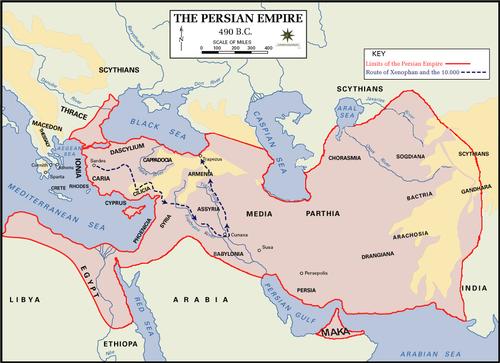 Persian Empire in 490 BC.Photo: DHUSMA in the public domain
Persian Empire in 490 BC.Photo: DHUSMA in the public domain
Between 330 and 327 BC. Alexander the Great defeated the Achaemenid Emperor Darius III and quelled local resistance in what is now Afghanistan. Alexander's successors, the Seleucids, kept the region under the influence of Greek culture until about 150 BC. Many Greek migrants settled in Bactria, the area around the present-day city in northern Afghanistan, Mazar-i Sharif. Around 250 BC. Bactria even became an independent Greek kingdom and from about 200 BC. Bactria even controlled almost all of present-day Afghanistan. The Maurya Dynasty, an Indian dynasty established between 321 and 185 BC. ruled almost the entire Indian subcontinent, controlled southern Afghanistan and passant also introduced Buddhism.
In ca.250 BC. the nomadic and Buddhist Kushanas founded a cultural and commercial empire that lasted until 224 AD. managed to maintain. From 224 to the 7th century, there was no real dominant power in this area, although vassals of the Persian Sassanid dynasty, led by Ardashir I in 224, stood as protectors of the population in that area. Afghanistan became a hub of various civilizations during this period and the Silk Road, among others, was developing during this time.
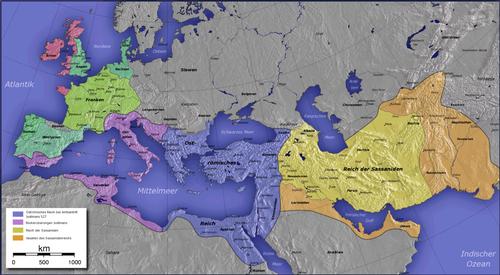 Empire of the Sasanians (light yellow: Sasanians; dark yellow: vassals)Photo: Captain Blood CC 3.0 Unported no changes made
Empire of the Sasanians (light yellow: Sasanians; dark yellow: vassals)Photo: Captain Blood CC 3.0 Unported no changes made
Islam makes its appearance
Of great influence on all of world history until now was the proclamation of Muhammad ibn Abadallah of a new faith: Islam. After defeating the Sassanids at the Battle of Qadisiya in 637, the Arab Muslims began an approximately 100-year battle against Afghan tribes that was also intended to bring Islam into these regions. In 650 Muslim troops occupied northern and western Afghanistan.
By the 10th century, the power of the Arab Caliphate of the Abassids (749-1258) and its successor in Central Asia, the Persian Samanid dynasty ( 819-999 and founded by Saman Khuda). The Ghaznavids, a Turkish dynasty split from the Samanids, ruled an empire around the Persian city of Ghazni, which was in present-day Afghanistan, from 975 to 1187. The Ghasnavid Dynasty, particularly under the rule of Mahmud of Ghazni, was the first major Islamic dynasty to rule Afghanistan.
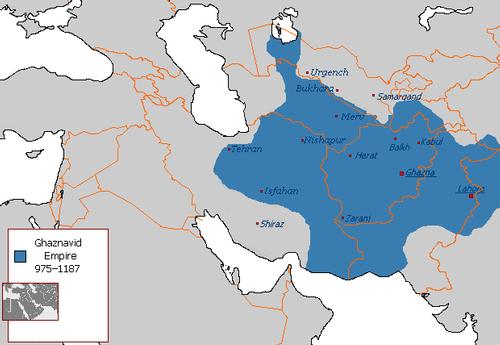 Ghasnavid Empire (975-1187)Photo: Arab League in the public domain
Ghasnavid Empire (975-1187)Photo: Arab League in the public domain
Mongols and Moguls
In 1220, Mongol troops led by the famed Genghis Khan conquered all of Central Asia. and destroyed important Afghan cities such as Balkh, Herat and Ghazni. However, Afghanistan remained a fragmented society until the year 1380, when Timur Lenk, a Turko-Mongol warlord, expanded and consolidated the Mongol Empire. Timur Lenk's successors, who died in 1405, ruled Afghanistan until the early 16th century. In 1504, the Afghan region came under the rule of the Mughals, a North Indian Islamic empire from the Indus and Ganges regions that dominated almost the entire Indian subcontinent between 1526 and 1858. The Mughals disputed Afghan territory with the Iranian Safavi Dynasty and the Uzbeks of Central Asia for two centuries .
Kingdom of Afghanistan
After the death of the great Savafi leader Nadir Shah Afshar in 1747, indigenous southern and southwestern Pashtuns, who belonged to the Durrani tribal confederation, took power until 1973 and founded the kingdom of Afghanistan. The first Durrani ruler was a bodyguard of Nadir Shah Afshar, the Pashtun Ahmad Shah, known as the founder of the Durrani Empire and founder of the Afghan nation, united all Pashtun tribes and ruled an empire that formed itself in 1760. stretched as far as Delhi in India and to the Arabian Sea. He even conquered the then Iranian capital, Isfahan, and the entire Safavid empire in 1722. The Durrani Empire fell apart after the death of Ahmad Shah in 1772 and under his successor, his son Timur Shah, but by 1826, under Dost Mohammad, leader of the Muhammadzai tribe, order had already been restored. Timur Shah Durrani (1748-1793) was still the one who moved the capital of his empire in 1776 from the Pashtun capital Kandahar to the current capital Kabul.
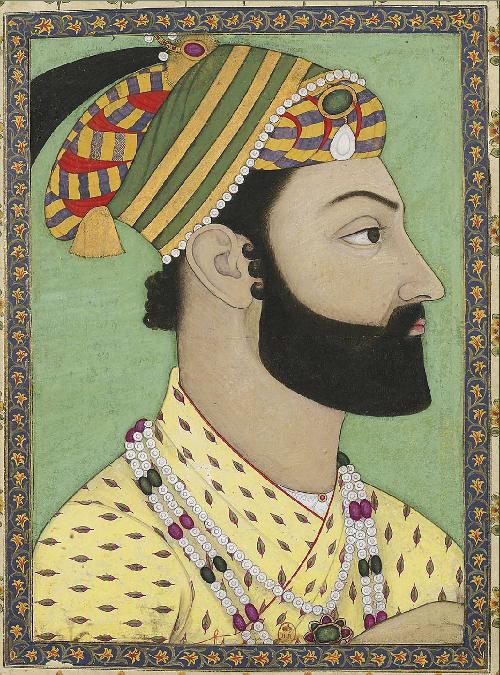 Ahmad (or Ahmed) Shah Durrani (1722-1772)Photo: Colonel Gentil in the public domain
Ahmad (or Ahmed) Shah Durrani (1722-1772)Photo: Colonel Gentil in the public domain
Dost Mohammad reigned as Emir of Afghanistan (1823-1839 and 1842-1863) at the beginning of the "Great Game", the c. 100-year struggle for the domination of Central Asia and Afghanistan between Tsarist Russia, which wanted to expand south to force a passage to the Indian Ocean, and Great Britain, which wanted to protect its lucrative income and power over India at all costs. During this period, Afghan rulers were able to maintain a degree of independence through a number of compromises.
British occupation
In the First Anglo-Afghan War (1839-1842), Dost Mohammad was deposed by the British, but they left with zéé Great losses of their Afghan garrisons as early as 1842 after revolts against the British and their front man Shah Shuja Durrani (1785-1842). In the following decades, Russian forces approached Afghanistan's northern border and in 1878 the British raided Afghanistan and occupied most of Afghanistan during the Second Anglo-Afghan War (1878-1881).
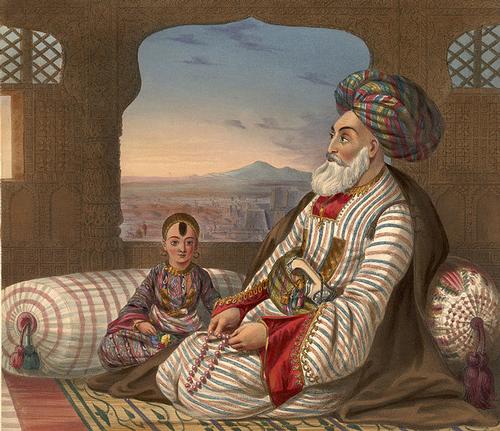 Dost Mohammad Khan (1793-1863)Photo: James Rattray (1818-1854) in the public domain
Dost Mohammad Khan (1793-1863)Photo: James Rattray (1818-1854) in the public domain
Yet the British were well aware that they could not lead the country themselves, but had to leave that to those in power from Afghanistan itself. Before that, the British appointed the Durrani Abdur Rahman Khan (c. 1830/1844-1901), and in 1881 the last British troops left Afghan territory. In 1880, Abdur Rahman Kahn entered his 21-year reign and, with the help of British financial aid and weapons, managed to navigate between British and Russian interests and the tensions that existed between different Afghan tribes. Moreover, he did not shy away from brutal violence to achieve his goal, a somewhat united Afghanistan. In addition, he carried out a major reorganization and renewal of the civil administration in what has since been regarded as the beginning of the modern Afghan state with a more or less central authority.
On November 12, 1893, the Durand Line was negotiated with the British. (Mortimer Durand on behalf of the British and Abdul Rahman on behalf of the Afghans), agreeing the border between Afghanistan and Pakistan (2640 km) in the Hindu Kush Mountains for a period of 100 years. It is clear that these agreements in the Durand Agreement, which split several Pashtun tribes, would become the source of future tensions in this border region.
First half of the 20th century
Abdur Rahman died in October 1901 and was succeeded by his son Habibullah Khan (1872-1919), who pushed through his father's administrative reforms and succeeded in keeping Afghanistan neutral in World War I. Under his rule (1901-1919), the clergy regained some of its lost rights and Afghanistan opened up more to foreign countries.
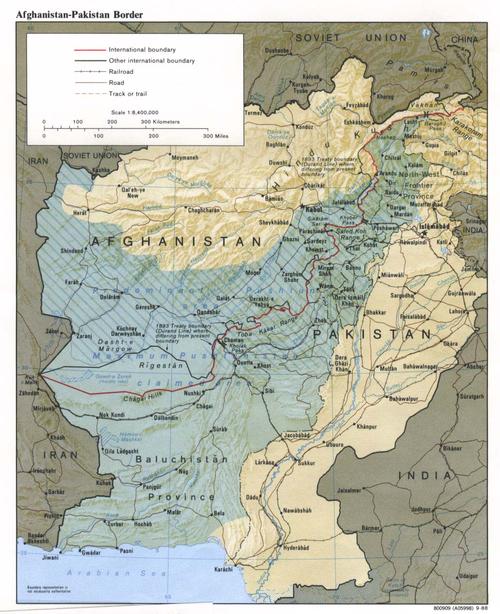 Durand Line: The red line on the map is the border between Afghanistan and Pakistan Photo: U.S. Government in the public domeain
Durand Line: The red line on the map is the border between Afghanistan and Pakistan Photo: U.S. Government in the public domeain
On February 20, 1919, Habibullah Khan was assassinated and succeeded by his son Amir Amanullah Khan (1892-1960). In the same year, Afghanistan signed the Treaty of Rawalpindi on August 19, ending the Third Anglo-Afghan War and marking the official date of an independent Afghanistan. Between the two world wars, Afghanistan managed to hold its own between the two world powers Russia and Great Britain. Amir Amanullah (reign 1919-1929) skilfully navigated the new British-Soviet rivalry and forged several good relations with important countries.
Amanullah gave Afghanistan its first constitution in 1923, with equal rights for Muslims and non-Muslims, but the internal reform program marked the end of Amanullah's reign, his plans were far too modern for the traditional population, and in 1929 he was forced to abdicate the throne. Eventually, Amanullah Khan fled his country and died in exile in 1960. Amanullah Khan was followed shortly by a very traditional leader nicknamed Bachcha Saqqao, then by his son Inayatullah Khan Seraj, then by Habibullah Kalakani and finally by Nadir Shah, who ruled from 1929 to 1933. Nadir Shah was assassinated and succeeded that year. by his son Zahir Shah, the last king of Afghanistan whose reign would last until 1973.
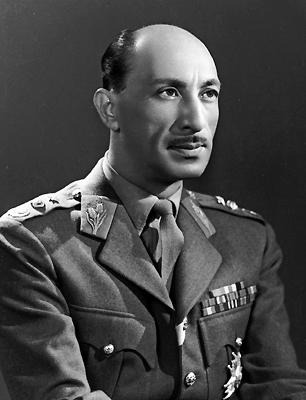 The last king of Afghanistan, Mohammed Zahir Shah (1914-2007)Photo: Public domain
The last king of Afghanistan, Mohammed Zahir Shah (1914-2007)Photo: Public domain
In World War II, Afghanistan remained neutral, and the persistent division of Pashtun tribes created tensions with the neighboring state Pakistan, which was founded on the other in 1948. side of the Durand line. In response, Afghanistan increasingly focused its foreign policy on the Soviet Union. The premiership of Mohammed Daoud (1953-1963), the king's nephew, was cautiously reformist, modern and aimed at centralizing the government and strengthening ties with the Soviet Union. However, in 1963 Zahir fired Shah Daoud for his anti-Pakistani policies that had severely damaged Afghanistan's fragile economy.
Russians
A new constitution, ratified in 1964, liberalized the constitutional monarchy somewhat, but in the following decade both economic and political conditions deteriorated in Afghanistan. On January 1, 1965, the Marxist People's Democratic Party of Afghanistan was founded in Kabul. After winning some parliamentary seats in the first elections in 1965 in which the party took part, the party fell into two factions, the 'Khalq', as early as 1967, with many Pashtun supporters in the countryside and led by the future president Nur Mohammed. Tarakki, and the 'Parcham', with many intellectual Pathans from the cities and led by Babrak Karmal, later also president of Afghanistan. The 1965 elections created a period of a Western-tinted Afghanistan.
On July 17, 1973, Lieutenant General Mohammed Daoud deposed his cousin King Mohammed Zahir Shah, proclaimed the Republic of Afghanistan and became president himself. However, economic conditions did not improve and Daoud lost most of his political support, which consisted mainly of the Parcham faction. Already on April 27, 1978, he was overthrown by communist rebels, murdered and in fact started the Afghan civil war that would last for decades. The leadership of Afghanistan now fell into the hands of a revolutionary council headed by the pro-Soviet Nur Mohammed Taraki, who was assassinated in August 1979. As early as 1978, when the Taraki regime was losing control of Afghanistan, Khalq supporter Hafizollah Amin, who was less pro-Soviet, took over power.
In 1979 threats from a tribal rebellion against the pro-communist government led to the invasion of tens of thousands of Soviet troops, which then ended up in a hopeless ten-year guerrilla war. President Amin was already killed in the Soviet invasion and was succeeded by Babrak Karmal. Karmal, with the help of the Soviets, was in turn pushed aside in 1986 by the most powerful man in the Secret Service, Mohammed Najibullah. The Soviets, along with two Soviet-backed regimes, failed to defeat the loose rally of mujahideen guerrillas, supported by the United States, Pakistan, China, Egypt, and Saudi Arabia, between 1979 and 1989. In 1988, the Soviet Union agreed to establish a neutral Afghan state, and the last Soviet troops left Afghanistan in February 1989. The agreement ended a basically pointless war that had killed thousands of Afghans, between five and a half years old. six million refugees and destroyed industry and agriculture.
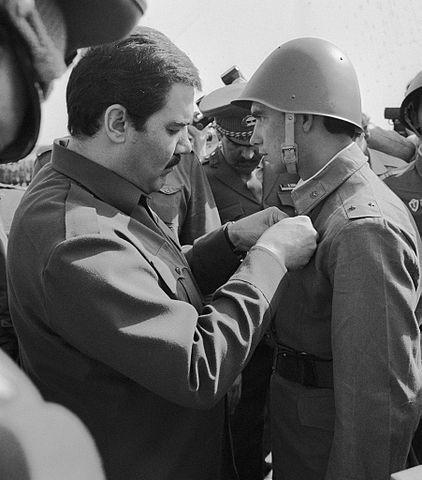 Mohammed Najibullah (1947-1996)Photo: RIA Novosti archive image #12070 / Alexandr Graschenkov CC-BYSA 3.0 no changes made
Mohammed Najibullah (1947-1996)Photo: RIA Novosti archive image #12070 / Alexandr Graschenkov CC-BYSA 3.0 no changes made
Communist rule lasted until April 1992, when the Mudjahedin forces of generals Ahmad Shah Massoud and Rashid Dostum conquered Kabul. The departure of the Soviet troops had already led to bitter fighting between Afghan resistance groups. Until then they had never united politically, and Pashtun groups in particular were very divided among themselves. The war turned into a battle for the capital Kabul between the Hezb-i-Islami and the Jamiat-e-Islami, ultimately devastating large parts of the city.
After the fall of Najibullah, an interim government was formed. A consultative meeting elected Burhannuddin Rabbani as president. Several Mudjahedin groups, including Gulbuddin Hekmatyar's Hezb-e-Islami and Dostum troops, turned against the Rabbani government, although Hekmatyar had been appointed prime minister.
Northwestern Afghanistan remained under effective control of Dostum. The Rabbani government exercised authority over the remainder of Afghanistan, with the exception of the southeast, where local Pashtun warlords and drug lords were killing each other.
Taliban
In the fall of 1994, the rural Taliban, an Islamic 'student' guerrilla movement supported by Pakistan and the Arab countries, started from the southern city of Kandahar their march into Afghanistan. They conquered the south of the country, in September 1996 Kabul and in 1998 the important northern city of Mazar-i Sharif fell. Pakistan, Saudi Arabiaand the Unitde Arab Emerates were the only countries to enter 1997 to recognize the Taliban regime. Afghanistan's seat in the UN was occupied by a representative of the deposed President Rabbani.
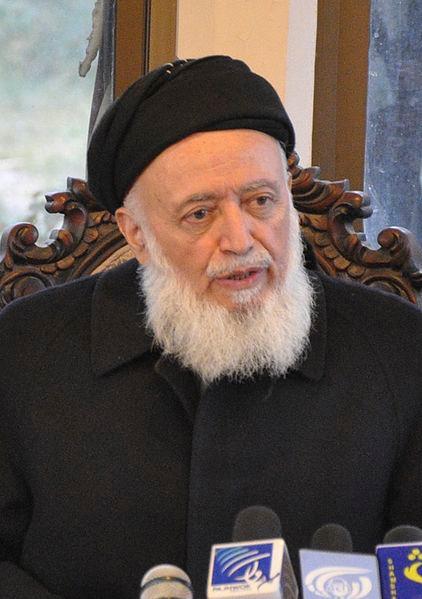 Burhanuddin Rabbani (1940-2011)Photo: DVIDS in the public domain
Burhanuddin Rabbani (1940-2011)Photo: DVIDS in the public domain
The Taliban effectively took the place of the fighting mujahedin groups, controlling about 95% of Afghanistan's territory (including the capital, Kabul). The remaining, mostly ethnic, minority groups in the north of the country and the expelled Rabbani government united in the United Islamic Front for the Salvation of Afghanistan against the Taliban and controlled areas in northern Afghanistan.
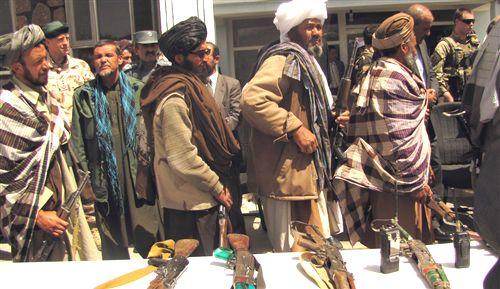 Former Taliban fighters surrender their weaponsPhoto: Isafmedia CC 2.0 Unported no changes made
Former Taliban fighters surrender their weaponsPhoto: Isafmedia CC 2.0 Unported no changes made
21th century
Following the attacks in New York and Washington on September 11, 2001, the Taliban regime came under strong pressure from the United States to to extradite the instigators of the terrorist attacks, including Osama bin Laden. After the Taliban refused to cooperate, heavy bombing by the Americans followed. After several weeks of fighting, Taliban rule fell and the city of Kandahar was abandoned by the Taliban on December 7, 1994.
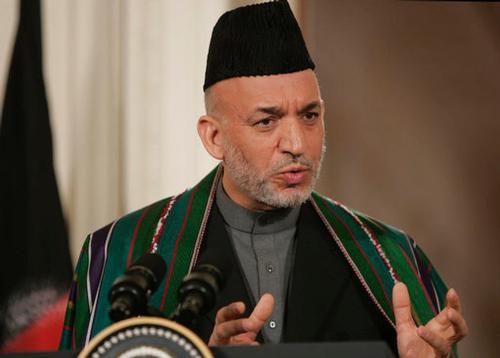
During the Bonn conference (December 2001), an agreement was reached on an interim government, led by the pro-Western Hamid Karzai, who had already established an anti-Taliban movement from Pakistan in 1998, and the stationing of an international peace force (ISAF-International Security Assistance Force). In June 2002, a so-called‘ Loya Jirga’ organized that designated a transition government, again led by Karzai. In January 2004, the Constitutional Loya Jirga, with representatives from all over the country, passed a new constitution. It declared Afghanistan the 'Islamic Republic of Afghanistan' and is quite progressive with on paper equal rights for all Afghans.
According to the Bonn Agreement, the first democratic elections were to be held in 2004 and that happened on October 9, 2004: Karzai was elected president and installed on December 7 as Afghanistan's first democratically elected president. His cabinet from December 2004 was a relatively clean cabinet of technocratic persons. The elections for parliament and provincial councils took place in September 2005, although without the presence of political parties. The parliament consisted of individual representatives, including many warlords, but also a number of women. The new government, which Karzai presented to parliament in early 2006, was again a moderate and somewhat technocratic cabinet.
The UN has been playing an important role in rebuilding and developing the political agenda since 2002, under leadership of the United Nations Assistance Mission to Afghanistan (UNAMA). In addition, the UN peacekeeping force ISAF has an important role to play, mainly because of the continuing insecurity in large parts of the country. The Afghan government is playing an increasingly important role in the coordination of reconstruction. At an international conference in Berlin (spring 2004), the international community pledged a total of $ 8.2 billion in aid for the period 2004-2006.
At a similar conference on January 31 and February 1, 2006 in London, the international community made new agreements on cooperation, for 5 years, with the Afghan government, in the Afghanistan Compact. Donors pledged approximately USD 10 billion. These agreements are monitored by an Afghan-international body, the Joint Coordination and Monitoring Board (JCMB).
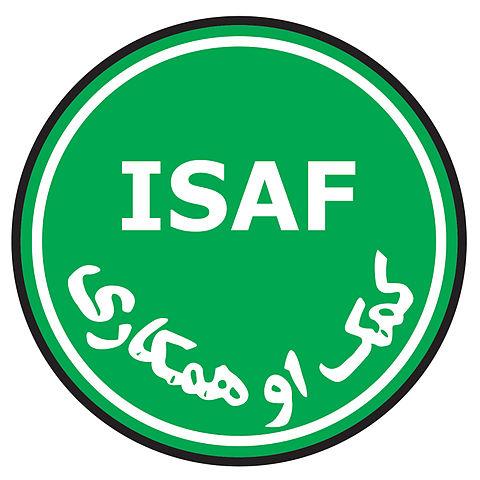 ISAF-logoPhoto: North Atlantic Treaty Organisation in the public domain
ISAF-logoPhoto: North Atlantic Treaty Organisation in the public domain
The year 2006 was marked by a revival of the Taliban, which was mainly expressed in an uprising in the south of the country. ISAF took over command of Southern and Eastern Afghanistan from the US-led Operation Enduring Freedom and is now in command of all of Afghanistan. Despite military successes, Afghan and international security forces have not yet been able to stabilize those areas.
President Karzai founded the Policy Action Group, in which the Afghan government consults with international actors active in the south about pacifying the area. Until May 1, 2007, the Netherlands had regional command over the ISAF troops in the south.
In May 2007, Mullah Dadullah, the Taliban leader, was killed in fighting with the armed forces of the United States and Afghanistan. The last king of Afghanistan, Zahir Shah, also passed away in 2007.
In April 2008, in Bucharest NATO leaders declared that the mission in Afghanistan had top priority. In Kabul, 40 people were killed in a July 2008 bombing of the Indian Embassy.
In February 2009, 20 NATO countries pledged to increase their military efforts. On August 20, 2009, relatively quiet presidential elections took place, which were again won by Karzai. Obama pledged more troops, relocating a total of 100,000 US soldiers to Afghanistan.
Former President Burhanuddin Rabbani was killed in a September 2011 bombing.
In 2013, a dialogue between the local those in power and the Taliban. At the beginning of 2014, it was still unrest in Afghanistan and preparations were being made for the presidential elections. In April 2014, the fight had not yet been decided, so a second round was needed. The second round on June 14 was between candidates Abdullah Abdullah and Ashraf Ghani: on September 21, 2014, Ashraf Ghani was declared the winner and on September 29, 2014, he was sworn in as president of Afghanistan, with Abdul Rashid Dostum and Sarwar Danish as vice presidents.
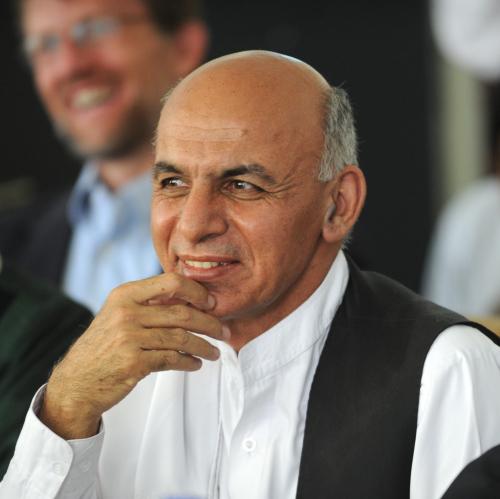 Ashraf Ghani, president of AfghanistanPhoto: S.K. Vemmer (U.S. Department of State) in the public domain
Ashraf Ghani, president of AfghanistanPhoto: S.K. Vemmer (U.S. Department of State) in the public domain
On October 29, 2014, an enormous amount of confiscated drugs was burned in Qasaba Khana Azi, north of Kabul; 20 tons, including 936 kg heroin, 9474 kg opium and 425 kg hash.
In late November 2014, a Taliban suicide attack during a volleyball tournament in Yahyakhail district, Paktita province, which borders Pakistan. At least 45 people were killed and dozens (seriously) injured, including children.
On December 2, 2014, NATO launched a new relief mission in Afghanistan in Brussels.
On December 8, 2014, NATO the joint operation between the United States and NATO officially ended. The 13-year mission cost nearly $ 720 billion and killed approximately 21,000 Afghans, more than 2,200 American soldiers and 453 British soldiers. 2015 and 2016 are marked by attacks and negotiations with the Taliban.
In June 2017, Islamic State militants conquer the mountainous area of Tora Bora in Nangarhar province, the former base of the late al-Qaeda leader Osama Bin Laden. In August 2017, President Trump of the United States promised additional troops to fight the Taliban. In January 2018, an ambulance loaded with bombs by the Taliban explodes in Kabul. This causes more than a hundred people to lose their lives. There will be many terrorist attacks in 2019, with the attack on a wedding in Kabul as the provisional low point, which left almost a hundred dead. The Taliban recapture Kabul in 2021 after US forces withdraw. Hibatullah Akhundzada is head of state of their interim government in Kabul, called the Islamic Emirate of Afghanistan.
Sources
CIA World Factbook
BBC - Country Profiles
Elmar Landeninformatie
Clammer, Paul / Afghanistan
Lonely Planet
Copyright: Team The World of Info